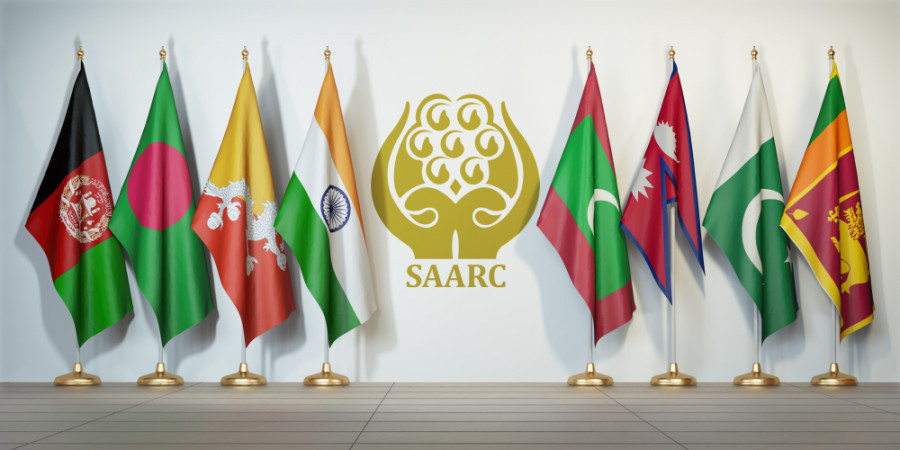Revival of SAARC
2020 MAR 26
Mains >
International relations > India and Neighbours > SAARC

Why in news:
South Asian Association for Regional Cooperation (SAARC) leaders recently held a summit via video-conference to discuss the way forward to fight the coronavirus pandemic.
Major take aways from the Summit:
- It was the Indian PM who initiated a summit via video-conference.
- He was joined by the heads of all SAARC nations except for Pakistan, which was represented by Pakistan Prime Minister’s Special Assistant on Health.
- India’s proposals:
- Creation of a COVID-19 Emergency Fund, for which it committed an initial offer of US$ 10 million. The fund was proposed to be based on the voluntary contribution from the member nations.
- Assembling a rapid response team of doctors and specialists along with testing kits and other equipment, who will be ready to help other SAARC nations on requests.
- A common research platform, to coordinate research on controlling epidemic diseases within South Asian region.
- Major concern raised during the summit was the possible economic impact of the virus outbreak.
Why SAARC declined?
- SAARC has been in a virtual deep freeze since India conveyed it would not attend the 19th SAARC summit (to be hosted by Pakistan in 2017) following the terror attacks in Pathankot and Uri in 2016. It was also boycotted by Afghanistan and Bangladesh.
- Since then India has downgraded SAARC as an instrument of its “Neighbourhood First Policy” and shifted the focus to the Bay of Bengal Initiative for Multi-Sectoral Technical and Economic Cooperation (BIMSTEC) instead.
- The tensions between the two leading powers of South Asia - India and Pakistan have caused great damage to SAARC often stunting its growth and development.
-
It has not been able to increase trade between the member states despite the promulgation of SAFTA or the South Asian Free Trade Agreement. Many of the SAARC members’ largest trade partner is not a fellow South Asian nation but the People’s Republic of China.
-
The lack of connectivity among member states is another weakness of the SAARC. This infrastructure deficit of member nations, in turn leads to reduced connectivity among the SAARC nations.
Why revival of SAARC is important:
- Opposed to BIMSTEC, SAARC has many summits and 30 plus years of its existence under its belt and the forum has an extensive network of mechanisms, regional centers and conventions as well as a permanent Secretariat in Kathmandu, Nepal.
- The SAARC nations have many common challenges ahead of them like poverty, joblessness, and climate change. Joint initiatives and efforts can be made to address these issues.
- Having a common platform can help better resolve issues relating to border, movement of people and goods.
- Analysts suggests that there was a sentiment from the South Asian countries for SAARC, which could not be completely replaced by BIMSTEC. The New Delhi promptly used this opportunity to address this sentiment of the South Asian countries.
- It is also a fact that the focus on BIMSTEC has not yielded the results India may have expected. Trade hasn’t reached the projected levels, current trade among its members is US$40 billion though the potential was set at $250 billion.
- India has opted out of the Regional Comprehensive Economic Partnership (RCEP) which would have added substance to BIMSTEC.
Conclusion
- PM signaled a change in India’s rejection of SAARC as a platform for regional cooperation by inviting all heads of state and government of SAARC countries to a video summit to promote a region-wide response to the Covid-19 pandemic.
- To remain viable, SAARC could follow the example of ASEAN which holds together many countries with a lot of differences. It holds regular meetings on all kinds of issues such as health, pandemics and cultural activities which often help break the ice.
- It makes better sense for India to pursue regional economic cooperation both through SAARC as well as BIMSTEC rather than project them as competing entities.
- India should finely balance Pakistan rather than direct confrontation, since both share memberships in SAARC and Shanghai Cooperation Organisation (SCO) - which is another important regional grouping.
- India should have a strategy for each nation ready when the pandemic subsides mostly in the form of assistance, as China will be eager to dominate the space.
Prelims Question
Q. Revival of South Asian Association of Regional Cooperation (SAARC) is in the interest of all South Asian countries, especially India. Analyze?
